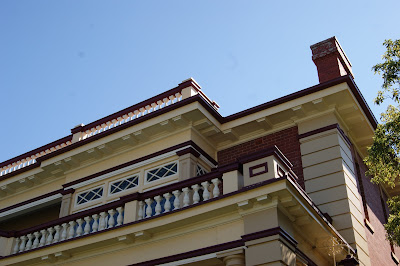W.D. Peacock was a pioneer in guaranteeing full cargo space to induce European ships to take on fruit in Tasmanian ports, whereas previously Tasmanian exporters had to ship fruit to the mainland, and thence onwards to Europe. By 1898, W.D. Peacock and (Sir) Henry Jones were sharing this high risk strategy. Their companies dominated the Tasmanian fruit export industry.
In 1910, Jones purchased a controlling share in Peacock’s company, and on Peacock’s retirement in 1919, Jones took over his company. The W.D. Peacock Company is well-known particularly for the wonderfully colorful labels on their crates of apples and pears.
W.D,Peacock owned this beautiful mansion in Swan Street, North Hobart on a substantial plot of land. When he passed away in 1921, his will bequeathed the property to the state of Tasmania for use for the benefit of his fellow Tasmanians. In 1940, the then Premier (Mr. Cosgrove) announced that Cabinet had decided to accept (the building and land in Swan St., Hobart, which had been bequeathed to the State under the will of the late Mr. W. D. Peacock).
Mr. Cosgrove said it was intended that the building should be used as a convalescent home for patients discharged from hospital. lt was intended to extend the privilege to those in moderate circumstances. It was officially opened as a Convalescent Home for Women in March 1943.
The house and property continues its community work to this day as the Hobart & Southern Districts Adult Community Mental Health Services, part of the Department of Health & Human Services where it is referred to as the Peacock Centre. A fitting tribute to the generosity of W.D. Peacock.
The original Peacock house has been lovingly restored and appears to serve as the administration centre for the Peacock Centre.
Main Text & information Sources –















